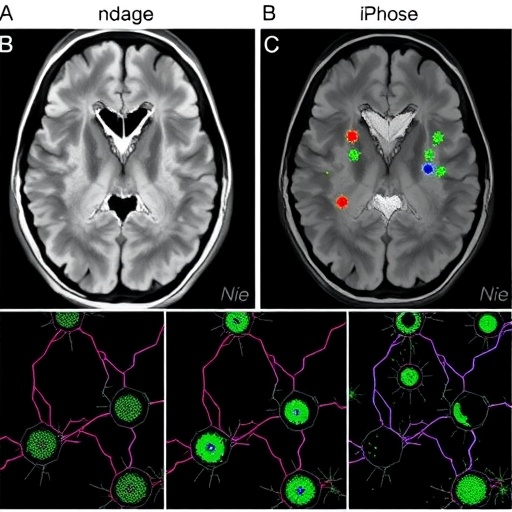In a groundbreaking exploration of early childhood experiences, researchers have uncovered the complex patterns of residential mobility among families with preterm infants. The study, recently published in the Journal of Perinatology, sheds light on how moving homes—an event often fraught with challenges—plays out uniquely in families navigating the uncertainties of premature birth. This new research not only quantifies the frequency of such moves but also delves into the timing and socioeconomic factors influencing these relocations during the critical first two years of life.
Residential mobility, or the act of changing one’s living situation, can fundamentally reshape a family’s social and economic landscape. For families with preterm infants, the stakes are particularly high. These infants often require specialized medical care and stable environments to support their development. Yet, the study reveals that moving is remarkably common in these households, highlighting an often overlooked dimension of postnatal care that could have long-term implications for child development and family well-being.
The researchers tracked a cohort of preterm infants from birth to two years of age, systematically gathering data on moves made by their families. The findings are compelling: nearly half of the families changed residences at least once before the child reached two years old. This rate is substantially higher than that observed in the general population, indicating a distinct pattern tied to the vulnerabilities and challenges faced by families of preterm infants.
Timing emerged as a critical element in the analysis. Moving was not evenly distributed over the two-year period but clustered predominantly within the first year of the infant’s life. This suggests that the postnatal period—a time of intense medical, emotional, and logistical demands—may coincide with periods of housing insecurity or transitions in social circumstances. Early moves could disrupt access to healthcare, social networks, and developmental resources, potentially compounding the inherent risks associated with prematurity.
Notably, the data demonstrates variability in the number of moves per family. While some families relocated only once, others moved multiple times, underscoring a gradient of residential instability. Through advanced statistical modeling, the research team identified distinct mobility trajectories, ranging from no moves to high-frequency movers. These trajectories correlated with varying demographic and socioeconomic profiles, suggesting heterogeneity in the forces driving residential changes.
Socioeconomic factors were particularly influential. Families facing financial instability, lower educational attainment, and limited social support were more prone to frequent moves. This aligns with broader literature linking economic hardship to housing instability. However, the study articulates this relationship within the specific context of preterm birth, highlighting how the intersection of medical vulnerability and socioeconomic stress can exacerbate housing disruptions.
The study further breaks new ground by examining the distance of moves. Interestingly, many movements were localized within the same metropolitan area, indicating that while families changed residences, they often remained within familiar communities. This pattern may reflect a balancing act between seeking affordable or adequate housing and maintaining proximity to essential healthcare facilities and social support networks.
Health system factors also appeared influential. Families with infants requiring prolonged or complex care were more likely to move, perhaps reflecting the strain of managing intensive medical appointments alongside housing challenges. The interplay between health needs and residential mobility underscores the importance of integrated social and healthcare services that can support families through these transitions.
Moreover, the findings raise critical questions about policy and healthcare delivery. Residential instability during the early years can disrupt continuity of care, compromising the developmental outcomes of preterm infants. The research calls for targeted interventions that address housing stability as a key component of neonatal follow-up programs, suggesting that multidisciplinary approaches could mitigate the adverse effects of frequent moves.
Beyond the immediate clinical implications, this research offers a poignant window into the lived realities of families grappling with prematurity. The stress of early neonatal care is compounded by tangible challenges in securing stable housing, underscoring the multifaceted nature of vulnerability in these populations. Understanding residential mobility provides a vital context to interpreting health outcomes and designing effective supports.
The methodological rigor of the study merits attention. Utilizing longitudinal data combined with sophisticated classification algorithms enabled the team to identify nuanced mobility patterns that traditional analyses might overlook. This approach enriches our comprehension of how residential changes unfold over time and interact with child health and family circumstances.
Importantly, the study encourages a shift in clinical perspective. Recognizing that housing instability is not merely a background socioeconomic factor but an active component in the care landscape invites healthcare providers to integrate social determinants more concretely into their care models. Screening for housing stability could become as routine as monitoring growth parameters or developmental milestones in follow-up visits.
This research also underscores the interplay between public health and social policy. Housing support policies designed to prioritize families with young children, particularly those with medical vulnerabilities, could make a transformative difference. The findings advocate for collaborations between healthcare systems, social services, and housing authorities to foster environments conducive to optimal child development.
The implications extend to mental health as well. Residential instability can induce stress and anxiety in caregivers, impacting their capacity to provide nurturing care essential for the infant’s psychosocial development. The researchers highlight the necessity of holistic support that addresses both the physical and psychosocial dimensions of health in families navigating preterm birth.
This landmark study opens avenues for further research. Future work could explore how mobility patterns intersect with other factors such as access to early intervention services, nutritional support, and parental workforce participation. Longitudinal outcomes examining developmental trajectories in relation to residential stability hold promise for deepening our understanding of resilience and risk.
Ultimately, the findings offer a clarion call to reimagine how healthcare systems and social policies can adapt to the realities of families caring for preterm infants. By foregrounding residential mobility, this research enriches the dialogue around neonatal care, emphasizing that the journey of prematurity extends far beyond the medical facilities into the homes and neighborhoods where infants begin their lives.
In summary, the intricate dance of moves experienced by these families reveals an underappreciated layer of complexity in the early lives of preterm infants. The study challenges clinicians, policymakers, and researchers to consider housing stability not as a peripheral concern but as central to fostering healthy infant development and family resilience.
Subject of Research: Residential mobility patterns experienced by families with preterm infants before age two years.
Article Title: Prevalence, predictors, and patterns of residential mobility by the parents of preterm infants.
Article References:
Murosko, D., Nelin, T., Sharma, P. et al. Prevalence, predictors, and patterns of residential mobility by the parents of preterm infants. J Perinatol (2025). https://doi.org/10.1038/s41372-025-02414-x
Image Credits: AI Generated
DOI: https://doi.org/10.1038/s41372-025-02414-x
Tags: early childhood experiences of preterm infantseffects of relocation on family well-beingfamily relocation after preterm birthfrequency of residential moves in early childhoodhousing instability in families with preterm infantsimpact of moving on child developmentJournal of Perinatology research findingslongitudinal study on preterm infantsmedical care for preterm infantspostnatal care challengespreterm infant residential mobilitysocioeconomic factors affecting moving patterns





